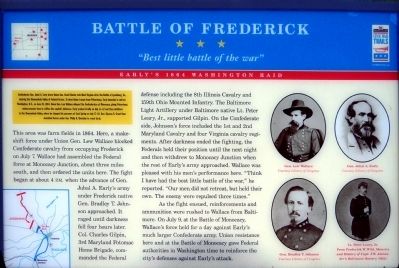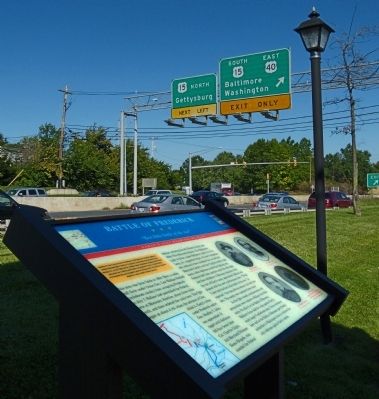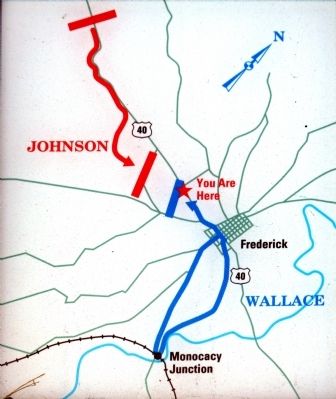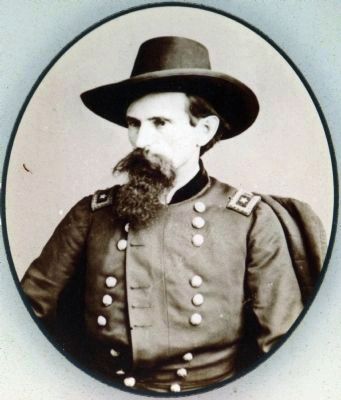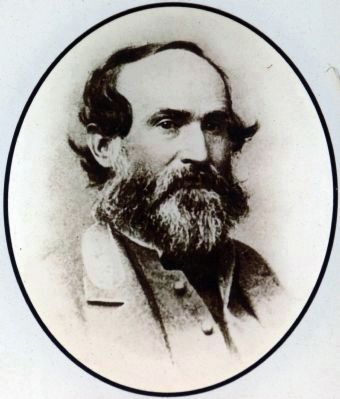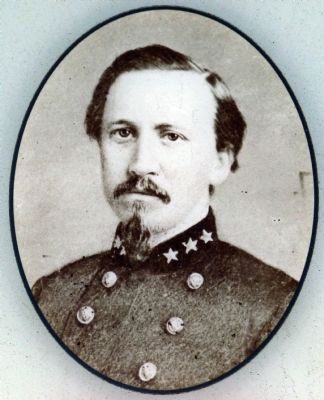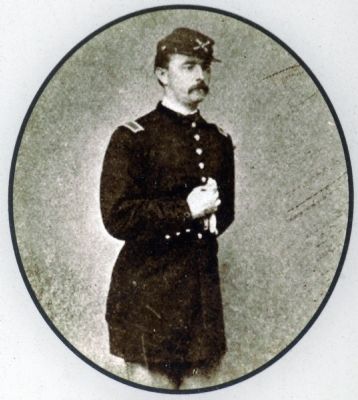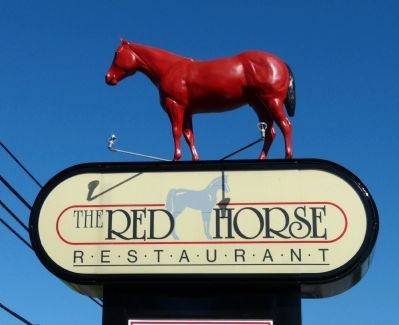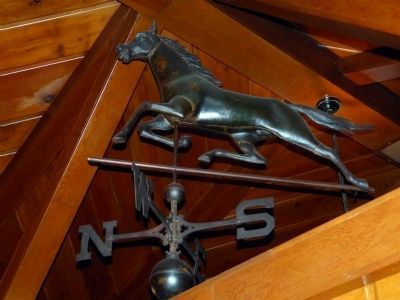Frederick in Frederick County, Maryland — The American Northeast (Mid-Atlantic)
Battle of Frederick
"Best little battle of the war"
— Early's 1864 Washington Raid —
(preface) Confederate Gen. Jubal A. Early drove Union Gen. David Hunter into West Virginia after the Battle of Lynchburg, Va., clearing the Shenandoah Valley of Federal forces. To draw Union troops from Petersburg, Early launched a raid on Washington D.C., on June 23, 1864. Union Gen. Lew Wallace delayed the Confederates at Monocacy, giving Petersburg reinforcements time to stiffen the capital's defenses. Early probed briefly on July 11-12 and withdrew to the Shenandoah Valley, where he stopped his pursuers at Cool Spring on July 17-18. Gen. Ulysses S. Grant then detached forces under Gen. Philip H. Sheridan to crush Early.
This area was farm fields in 1864. Here, a make-shift force under Union Gen. Lew Wallace blocked Confederate cavalry from occupying Frederick on July 7. Wallace had assembled the Federal force at Monocacy Junction, about three miles south, and then ordered the units here. The fight began about 4 P.M. when Gen. Jubal A. Early's army under Frederick native Bradley T. Johnson approached. It raged until darkness fell four hours later. Col. Charles Gilpin, 3rd Maryland Potomac Home Brigade, commanded the Federal defense including the 8th Illinois Cavalry and 159th Ohio Mounted Infantry. The Baltimore Light Artillery under Baltimore native Lt. Peter Leary, Jr., supported Gilpin. On the Confederate side, Johnson's force included the 1st and 2nd Maryland Cavalry and four Virginia cavalry regiments. After darkness ended the fighting, the Federals held their position until the next night and then withdrew to Monocacy Junction when the rest of Early's army approached. Wallace was pleased with his men's performance here. "Think I had the best little battle of the war," he reported. "Our men did not retreat, but held their own. The enemy were repulsed three times."
As the fight ensued, reinforcements and ammunition were rushed to Wallace from Baltimore. On July 9, at the Battle of Monocacy, Wallace's force held for a day against Early's much larger Confederate army. Union resistance here and at the Battle of Monocacy gave Federal authorities in Washington time to reinforce the city's defenses against Early's attack.
Erected by Maryland Civil War Trails.
Topics and series. This historical marker is listed in this topic list: War, US Civil. In addition, it is included in the Maryland Civil War Trails series list. A significant historical month for this entry is June 1927.
Location. This marker has been replaced by another marker nearby. It was located near 39° 24.946′ N, 77° 26.266′ W. Marker was in Frederick, Maryland, in Frederick County. Marker could be reached from the intersection of West Patrick Street (U.S. 40) and Linden Avenue, on the right when traveling east. Marker is in the parking lot of the Red Horse Restaurant, in the shadow of the Red Horse Sign, near the ramp to US 15 South from US 40 (W Patrick St). Touch for map. Marker was at or near this postal address: 996 West Patrick Street, Frederick MD 21703, United States of America. Touch for directions.
Other nearby markers. At least 8 other markers are within walking distance of this location. A different marker also named Battle of Frederick (here, next to this marker); Maj. Gen. Edward Braddock (about 600 feet away, measured in a direct line); PFC James Moore Jr (approx. 0.7 miles away); a different marker also named PFC James Moore Jr (approx. ¾ mile away); Lloyd C. Culler (approx. 0.8 miles away); Schifferstadt (approx. 0.8 miles away); Schifferstadt Architectural Museum (approx. 0.8 miles away); Gettysburg Campaign (approx. 0.8 miles away). Touch for a list and map of all markers in Frederick.
Related marker. Click here for another marker that is related to this marker. New Marker At This Location also titled "Battle of Frederick"
Credits. This page was last revised on September 6, 2023. It was originally submitted on August 29, 2014, by Allen C. Browne of Silver Spring, Maryland. This page has been viewed 1,382 times since then and 42 times this year. Last updated on February 16, 2021, by Bradley Owen of Morgantown, West Virginia. Photos: 1, 2, 3, 4, 5, 6, 7, 8, 9. submitted on August 29, 2014, by Allen C. Browne of Silver Spring, Maryland. • Bernard Fisher was the editor who published this page.
